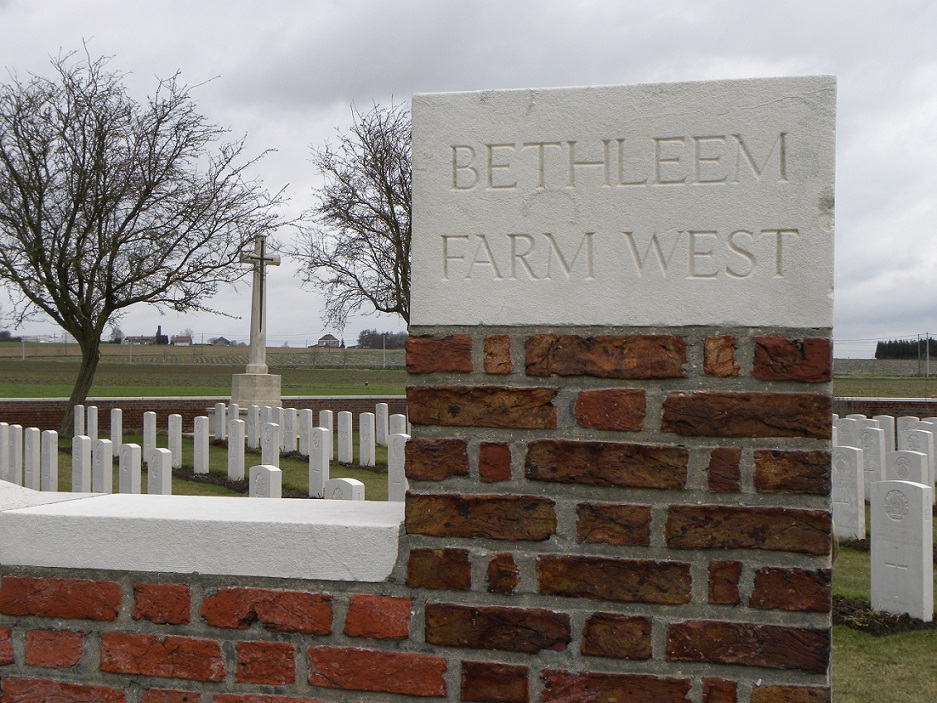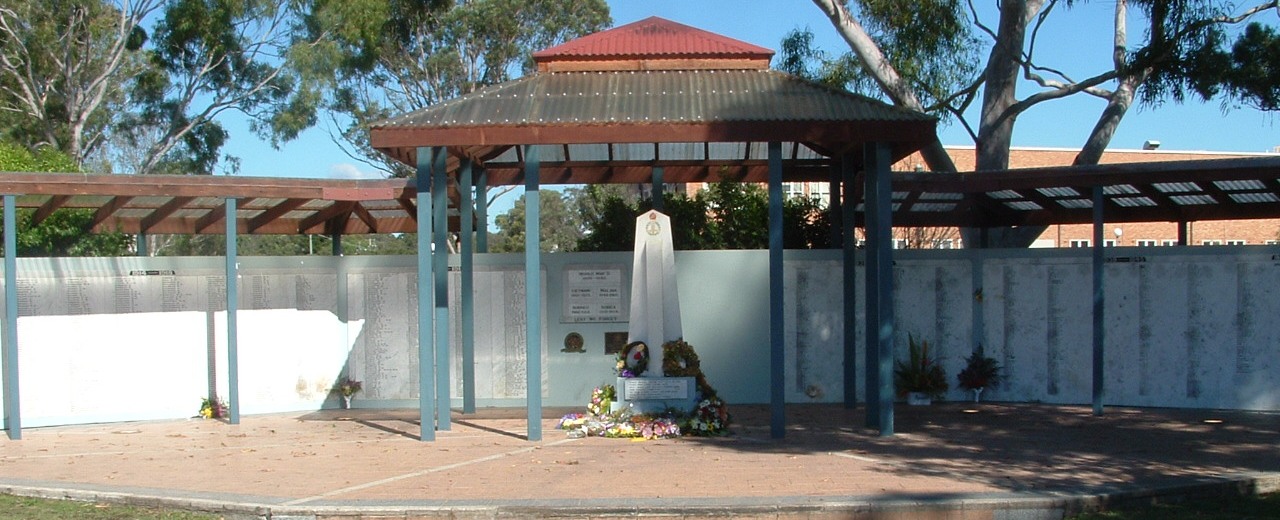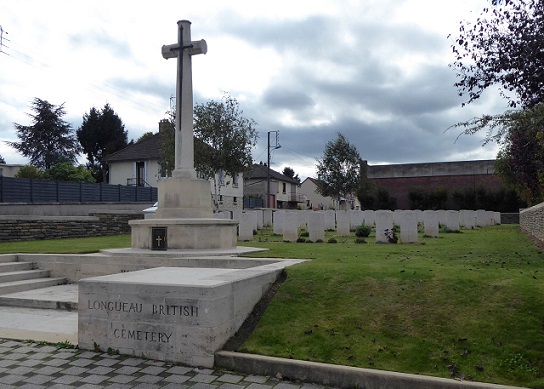
35th BATTALION AIF
Private: 101 William HOWLETT.
Born: 1885. Carlisle, England.
Married: 1912. Church of England Church, Cessnock, New South Wales, Australia. Marriage Cert:5451/1912.
Wife: Flora Howlett. nee: Cameron. (1873-1949)
Died: 20th July 1917. Killed in Action, Messines, Belgium.
Father: Henry Arthur Howlett. (1841-1904)
Mother: Elizabeth Renwick Howlett. nee: Huddart. (1849-1899)
INFORMATION
William Howlett enlisted with the AIF on the 27th November 1915 at the Broadmeadow Army Camp where he was allocated to A Company 35th Battalion before be was sent to the West Maitland Camp on the 29th.

Rutherford Army Camp, West Maitland 1916
He embarked on board HMAT A24 "Benalla" from Sydney on the 1st May 1916 with 28 Officers and 991 other ranks. William was marched into the 9th Training Battalion at the Durrington Army Camp at Lark Hill. He proceeded overseas with the 9th Infantry Brigade on the 21st November 1916. William was detached to the Rail Construction Depot at West Cappel on the 7th of January 1917 followed by Private: 2063 Albert James DONOVAN 35th Battalion a few week later. William returned from his detachment and re-joined the 35th Battalion on the 10th February 1917.
7th June 1917.
THE BATTLE OF MESSINES
The 3rd Australian Divisions first major offensive was at Messines Ridge on the 7th June 1917. The Australian 3rd Division was a part of the II Anzac Corps which was allotted to the first assault. The 25th New Zealand, 3rd Australian Division with the 4th Australian Division in reserve. The 4th Division were battle hardened troops who had fought many major battles. The 3rd Australian Division were having problems getting to the "jump off" point. The day before the 9th and 10th Infantry Brigades were bombarded by German Gas-Shells around Hill 63 and Ploegsteert Wood. Many of the Aussies were not wearing gas masks, but despite this they pressed on even though they received 500 casualties.
They made it to the "jump off" point but only just with some of the men from the 9th and 10th going straight over the top without stopping. The mines went up and the attack commenced behind a protective barrage. The II Anzac Corps were attacking on the right with their objective being the southern shoulder of the ridge which included Messines, the Dover and St Yves areas as far south to the east of Ploegsteert Wood.
Major General Sir John MONASH's 3rd Division had to contend with a tricky 3 mile approach out of Ploegsteert Wood and after the German gas attack, but they were not deterred. The 9th Infantry Brigade under Brigadier General: Alexander JOBSON and the 10th Infantry Brigade under Brigadier General W R NICHOLL had just made the jumping off point but some of the men did not stop, going straight into the assault from the approach march.
Their objective lay between St Yves and the Douve. The mines at Trench 127 and Trench 12 at Factory Farm were laid to aid this task. The explosions erupted a few seconds before zero hour and created craters of 200 feet in diameter, completely obliterating the German defense line as the 9th and 10th Infantry Brigades went over the top. The mine crates forced the 9th and 10th Brigades to veer to the left and right which caused some confusion with the main assault. It is testimony to the quality of training that every man knew the ground, tasks and objectives so well.
Private: 1804 John CARROLL 33rd Battalion, rushed the enemy's trench and bayoneted four of the German occupants. He then noticed a comrade in difficulties and went to his assistance, killing another German. He then attacked single handed a German Machine Gun Team, killing all three of them and capturing the gun. He later rescued two of his comrades who had been buried alive by German Shell Fire, and in spite of heavy shelling and machine gun fire he dug them out alive and saved them from certain death. John was awarded the Victoria Cross.
The German forward zone was completely engulfed and taken by the main assault. The two supporting battalions of each brigade then passed the leading battalion to continue the advance. The men were constantly re-supplied and the ridge was taken. There were many German prisoners taken during the offensive. The 3rd Division was well ahead with the 9th Infantry Brigade pushing on beyond Grey Farm, and on the right the 10th Infantry Brigade were veering left towards Septieme Barn north of Douve.
The German resistance was heavy but was generally brushed aside by tanks and artillery before the infantry had to become too involved. The 4th Bavarian Divisions Artillery had made little impact, but as the day wore on the 3rd Division and later the 4th Australian Division received many casualties from German artillery. (70% of all casualties during WW1 were from artillery).
By 9:00am nearly 6 hours after the assault began the Germans were in disarray, but there was a major problem as the Australians received less casualties as anticipated and when ordered to dig into the ridge they had so many men, that some could not find shelter. the 35th battalion were dug in around Seaforth Farm.
The second phase of the operation was to take the Oosttaverne Line. The 3rd Australian Division would now be in reserve with the 4th Division attacking. The 9th Infantry Brigade (33-34-35-36Bn) were near Thatched Cottage facing Warneton. The river Lys was to their right and the Ploegsteert Wood was now behind them.
Once their objectives were taken the troops consolidated. A barrage to stop and counter attack was shortened and caught three battalions which had to retire. By 9:00 pm this part of the Oosttaverne Line was abandoned. At 10:45 pm General: Alexander John GODLEY ordered the 3rd and 4th Divisions to retake it. This they did by the early hours of the 8th of June.
The Battle for Messines Ridge during May-June 1917 saw 35 officers and 1,631 other ranks loose their lives.
9th Infantry Brigade Casualties.
| 33rd Battalion. AIF |
8 Officers |
382 Other ranks |
| 34th Battalion. AIF |
10 Officers |
378 Other ranks |
| 35th Battalion. AIF |
5 Officers |
431 Other ranks |
| 36th Battalion. AIF |
9 Officers |
421 Other ranks |
| 9th Machine Gun Company. AIF |
2 Officer |
17 Other ranks |
| 9th Light Trench Mortar Battery. |
1 Officer |
2 Other ranks |

FIELD DRESSING STATION, MESSINES 7th June 1917.
William was treated by the 9th Australian Field Ambulance on the 23rd June for Bunions and was evacuated to the Field Dressing Room Station at Messines for further treatment where he spent the next in Convalescence and re-joined his unit on the 2nd July. A few days later he was again treated by the 9th Australian Field Ambulance, this time he was suffering from Corns and was once again evacuated to the Field Dressing Room Station at Messines for further treatment.
1st-7th July 1917. MESSINES.
35th Battalion occupied Support Trenches just S West of MESSINES (The Brigade being in Support) The Battalion HQ was established in our old front line. Enemy was fairly quiet except for Counter Battery work which was very constant. During this time men were constantly employed digging and improving communication trenches towards the new front line. On 1/7/17, 2 Lieutenant: Mortimer Eustace LYNE was wounded by a shell entering his dugout. Captain: Frank Harold JARRETT was wounded on the 5/7/17 by a piece of shell entering his dugout. He died of wounds received at 2:00 pm in the Main Dressing Station on the same date.
(35th Battalion War Diary)
19th July 1917.
William re joined A Company 35th Battalion AIF in front line Messines Sector when Lieutenant: Wynter Wallace WARDEN was wounded whilst supervising transport of rations over Messines Ridge. The next day William was Killed in Action at Messines and is remembered with honour and is commemorated in perpetuity by the Commonwealth War Graves Commission at the Bethleem Farm West Cemetery, Flanders, Belgium.


Bethleem Farm West Cemetery, Flanders, Belgium


Cessnock War Memorial
Cessnock Eagle and South Maitland Recorder (NSW : 1913 - 1954), Friday 22 February 1918, page 1
List of Cessnock District Soldiers Killed or Died of Wounds.
Lance-Corpl. John Anderson Pte. Leslie Andrews. Pte. Frederick Brown Pte. Henry Brown Pte. Robert J. Brennan Pte. Robert Baillie Pte. Wm. Baillie Gnr. Henry Cherry Lance-Corpl. M. Carroll Pte. Sidney L. Campion Pte. Clifford R. Davies Corpl. David S. Dunlop Tpr. Arthur W. Drlnkwater Tpr. Harold Ling Pte. Wm. Lamb Pte. Cyril E. Edmunds Lance-CorpL David Evans Pte. P. Egan Pty.-Officer Mortimer Froude Gnr. Wm. Graham Pte. Thos. Grant Pte. Wm. Gaynor Pte. F. D. Grimson Pte. Frank C. Howard Pte. Richard Hill, jun. Pte. Thos. Jackson Sergt. Peter Clarke Kibble, D.C.M. Pte. Stanley Kaiser Pte. Russell Kempe Pte. John Marshall Pte. A. F. Mayne Pte. Karl Matthews Lance-Corpl T. Morrison Lance-Copl. Leslie L. McGann Pte. Jas. McFarlane Pte. Roy Alexander McMillan Lance-Corpl. Richard King Pte. Alan O'Neill Pte. George Platt Pte. Frank H. Pickering Pte. Roland Pickering Tpr. Mark Reid Pte. Arthur Ralston Pte. Wm. E. Steadman Gnr. Edmund Slater Pte. Leslie Sneddon Pte. Chas. Smith Lieut. Eric D. Simmons Pte. Samuel Stapleford Captain Garnet Tinson Pte. Frank Villis Pte. Stanley Villis Pte. Henry Wills Pte. C. R. Wotton Pte. Walter Woodland Lance-CorpL Leslie W. Wilson Pte. Wm. Wilson Pte. Jack McGtane Pte. Toney Flynn Pte. Thomas J Rowe Pte. R. Donald Pte. R. Brown Corpl. T. G. Coxall Pte. William Russell Pte. Henry Phee Pte. William Howlett Pte. Dudley Parker Pte. John Mclnnes Pte. A. H. Parkinson Pte. Peter Inglis Private S. Hatfield Pte. A. Corkett Cpl. W. A. Diplock Lance-Sergt. W. A. Roberts (M.M.) Pte. Darwood Gunner H. T. Furner Pte. D. Anderson. Pte. W H Griffiths Pte J. Muir Pte D. McRae Pte R. Knight Pte. C. Sams Gnr, W. Willi Pte. W. Ingle Pte. J. Love Pte. John Henry Fairhall Pte. A. Weir
Family Information
William was a married 30 year old Miner at the Cessnock No: 2 Colliery and lived at Vincent Street, Cessnock, N.S.W. upon his enlistment with the AIF. William immigrated from Carlisle, England to Australia and married Flora Cameron in 1912 at Cessnock New South Wales. They had 1 son Henry William Cameron Howlett (1913-1992)

Church of England Church, Cessnock, New South Wales.

Flora Howlett. nee: Cameron. (1873-1949)
Born in 1913, Harry Howlett played Dr Barnes in the WAC's first production of Waiting for Lefty in January 1936, followed by Ernst in Till The Day I Die 1936, Paradise Lost 1936, Squaring the Circle 1936, J Carlyle Benson in Boy Meets Girl 1937, Bury The Dead 1937, the original Money Power in Where’s That Bomb? 1937, Behind the Scenes 1937, The Brave and the Blind 1938, and a repeat of Where’s That Bomb? 1938.

In the 1930s he also acted in a Burwood-Strathfield Players Club variety show 1931, with Mayne Lynton in a Nellie Stewart memorial at the Theatre Royal 1934, in Leonardo Players’ Lucrece at the Savoy 1935, Electra with Rosalind Spence in the title role at the Conservatorium 1936 and in the Independent Theatre’s Winterset and Judgment Day 1938.
In January 1939 Howlett, living at Homebush, was seriously injured as a passenger in a car which capsized at Emu Plains. By this time, working with Peter Finch and other ABC radio artists, he gave his profession as actor. He acted in Lux Radio Theatre, wrote scripts for 2GB Macquarie Radio Theatre and the science fiction serial Rocky Starr, and co-wrote The Air Adventures of Biggles and The Three Diggers. According to Eddie Allison, he was head of TV for Catholic Broadcasting.
In 1939 Henry William Cameron Howlett married Beatrice Mary Keane at Burwood, after which they lived in New Zealand. By 1954 they were back in Sydney, market gardening at Castle Hill and had written a radio serial The Mary Jane about the paddle steamer days on the Murray River, based on reminiscences of “old timers” in the district.
New Theatre History
May 2022.
Hello to all
I live in Carlisle, England and had a Gt Gt Uncle killed July 17th 1917 in Belgium. He emigrated to Australia from Carlisle, married and had one son before he joined up into the 35th Battalion. He was called William Howlett, service number 101 from Newcastle. Occupation was a miner. He left Australia aboard the “Benalla” on 1st May 1916. I have noticed the above message regarding the “Benalla”, wonder if those two men knew each other ?
I have his service records etc from the brilliant NAA found by someone. I have a civilian photo of him but would love a photo of him in uniform, if there is one.
Thank you in advance and great work by the way.
Ivor Norman.. (Photos: Ivor Norman: ancestry.com)
Military Records






































© Commonwealth of Australia (National Archives of Australia)
Under Construction: 04/05/2022-05/05/2022.
























































































































































































































































































































